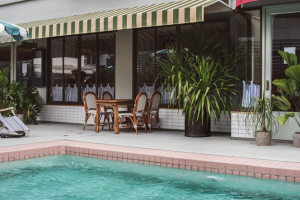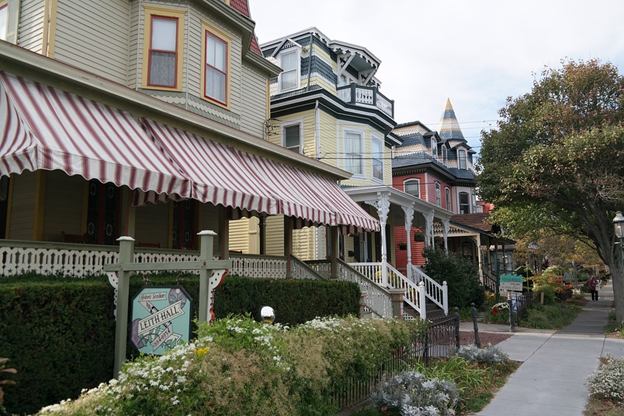Awnings can transform your outdoor space into a stylish and functional area, offering shade, weather protection, and a dash of elegance. But with so many options available, how do you choose the perfect awning for your needs? This guide will walk you through everything you need to know to make an informed decision.
Understanding Your Needs
Climate Considerations
Your local climate plays a significant role in determining the right awning for your home. If you live in a sunny, hot climate, you’ll want an awning that offers substantial UV protection and cooling benefits. On the other hand, if you experience frequent rain, look for water-resistant materials that can withstand heavy downpours. Some awnings are designed to handle snow loads as well, which is crucial for colder climates.
Space Assessment
Assessing the space where you plan to install your awning is essential for finding the perfect fit. Begin by measuring the dimensions of the area, considering both width and height, to ensure that your chosen awning complements your home’s architecture. Installing well-designed awnings that take these factors into account can enhance your outdoor aesthetic and maximize functionality by providing adequate coverage without overwhelming the space. Additionally, think about how you intend to use this area—whether for entertaining guests, creating a relaxing retreat, or simply shielding windows and doors from the elements. Understanding these factors will help you select an awning that meets your needs and transforms your outdoor area into a welcoming environment.
Types of Awnings
Retractable vs. Stationary
Retractable awnings offer flexibility, allowing you to extend or retract them based on the weather. They are ideal for those who want control over their outdoor environment. However, they can be more expensive and require regular maintenance. Stationary awnings, on the other hand, provide constant coverage and are generally more robust. They require less maintenance but lack the flexibility of retractable options.
Motorized vs. Manual
Motorized awnings offer the ultimate convenience. With the push of a button, you can extend or retract the awning, making them ideal for those who value ease of use. They do, however, come at a higher price point and require electricity. Manual awnings are less expensive and don’t rely on electricity, making them a more budget-friendly option. However, they require more physical effort to operate.
Material Options
Fabrics
When it comes to fabrics, look for durable, weather-resistant materials like acrylic or vinyl-coated polyester. These fabrics are designed to withstand harsh weather conditions and are easy to clean. They also come in various colors and patterns, allowing you to choose one that complements your home’s exterior. Canvas is another popular option, though it may require more maintenance to keep it looking fresh.
Metals
If you’re considering metal awnings, aluminum and steel are your primary options. Aluminum awnings are lightweight, rust-resistant, and require minimal maintenance. They are also available in various colors and finishes. Steel awnings are more robust and durable but may require regular maintenance to prevent rust. Both options offer excellent durability and can add a modern touch to your home.
Design and Style
Colors and Patterns
Choosing the right color and pattern for your awning can significantly impact your home’s curb appeal. Neutral tones like beige, gray, and white can blend seamlessly with most exteriors. Bold colors and patterns can make a statement and add a unique touch to your outdoor space. Consider the overall aesthetics of your home and choose an awning that complements it.
Customization Options
Many manufacturers offer customization options, allowing you to create an awning that fits your specific needs and style preferences. From custom sizes to unique fabric patterns and colors, you can design an awning that perfectly matches your vision. Some companies even offer personalized logos or designs, adding a truly bespoke element to your outdoor space.
Budgeting and Installation
Estimating Costs
The cost of an awning can vary widely based on materials, size, and additional features like motorization. On average, you can expect to spend between $800 and $2,500 for a quality awning. Custom awnings or those with advanced features can cost significantly more. Be sure to get multiple quotes to ensure you’re getting the best deal.
Professional vs. DIY Installation
Professional installation ensures your awning is securely and correctly installed, which is crucial for both safety and functionality. While this option can be more expensive, it offers peace of mind and often includes a warranty. DIY installation can save money, but it requires some skill and the right tools. If you’re handy and enjoy tackling home improvement projects, this could be a rewarding option.
Maintenance and Longevity
Regular Maintenance Tips
To keep your awning looking its best and functioning well, regular maintenance is essential. Clean the fabric regularly with mild soap and water, and check for any tears or damage. For metal awnings, inspect them for rust and apply a rust-preventive coating if needed. Lubricate moving parts of retractable awnings to ensure smooth operation.
Maximizing Lifespan
The lifespan of your awning depends on the materials and how well you maintain it. High-quality fabric awnings can last up to 15 years with proper care, while metal awnings can last even longer. Following the manufacturer’s maintenance guidelines and addressing any issues promptly will help you get the most out of your investment.

Choosing the perfect awning for your outdoor space involves considering your climate, space, and personal style. By understanding the different types of awnings and materials available, you can make an informed decision that enhances your home’s functionality and aesthetic appeal.

